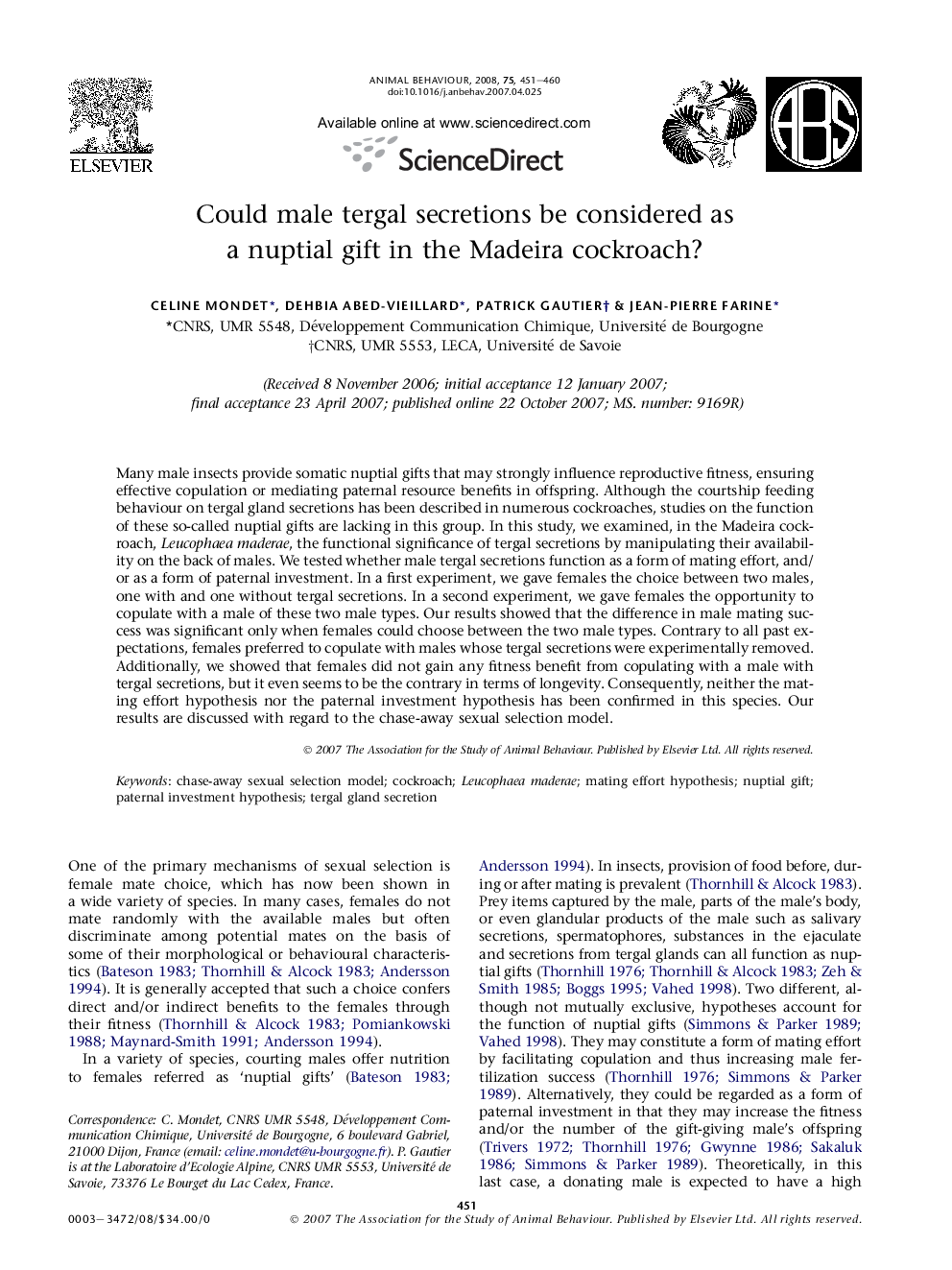| کد مقاله | کد نشریه | سال انتشار | مقاله انگلیسی | نسخه تمام متن |
|---|---|---|---|---|
| 2417894 | 1104331 | 2008 | 10 صفحه PDF | دانلود رایگان |

Many male insects provide somatic nuptial gifts that may strongly influence reproductive fitness, ensuring effective copulation or mediating paternal resource benefits in offspring. Although the courtship feeding behaviour on tergal gland secretions has been described in numerous cockroaches, studies on the function of these so-called nuptial gifts are lacking in this group. In this study, we examined, in the Madeira cockroach, Leucophaea maderae, the functional significance of tergal secretions by manipulating their availability on the back of males. We tested whether male tergal secretions function as a form of mating effort, and/or as a form of paternal investment. In a first experiment, we gave females the choice between two males, one with and one without tergal secretions. In a second experiment, we gave females the opportunity to copulate with a male of these two male types. Our results showed that the difference in male mating success was significant only when females could choose between the two male types. Contrary to all past expectations, females preferred to copulate with males whose tergal secretions were experimentally removed. Additionally, we showed that females did not gain any fitness benefit from copulating with a male with tergal secretions, but it even seems to be the contrary in terms of longevity. Consequently, neither the mating effort hypothesis nor the paternal investment hypothesis has been confirmed in this species. Our results are discussed with regard to the chase-away sexual selection model.
Journal: Animal Behaviour - Volume 75, Issue 2, February 2008, Pages 451–460